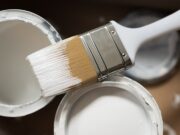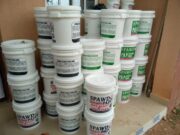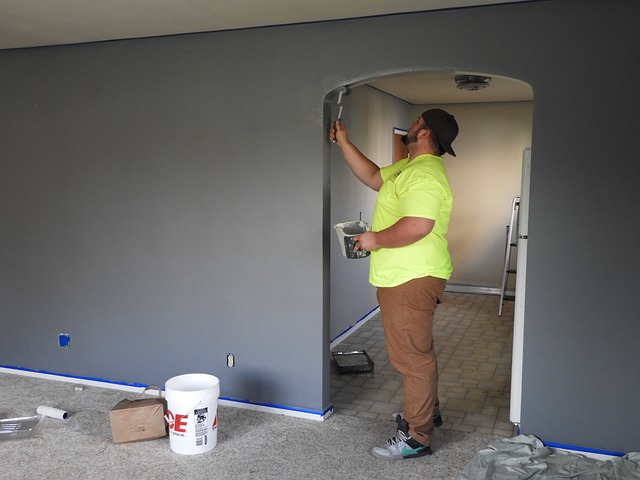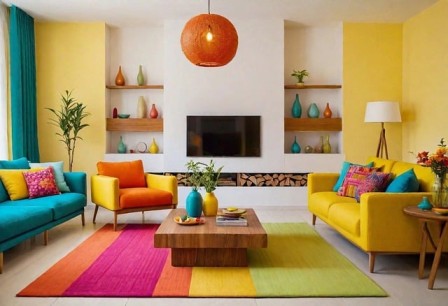When it comes to your home improvement projects, paint plays an important role in enhancing the beauty and appearance of your space.
However, a common question that people often ask is, How long does paint last?
If you’re looking at storing leftover paint or planning a future project, understanding the lifespan of paint is essential to ensuring the best results and value for your investment.
The Importance of Paint Longevity
When it comes to painting and decoration, paint is more than just a decorative element. It acts as a protective layer for surfaces, shielding them from wear and tear, weather, and other environmental factors.
The lifespan of the paint you use on your wall or space can significantly impact the overall appearance and maintenance needs.
So, knowing how long different types of paint last can help you make informed decisions about when to repaint your house and how to store leftover paint properly.
What Are The Factors That Influence Paint Lifespan?
Many factors determine how long your paint will last, both in its can and on the wall. Some of these factors include,
1. The Type of Paint
1. Oil-Based Paint
Oil-based paint is known for its durability and smooth finish, when stored properly the paint it can last for about 15 years
Meanwhile, on surfaces, it can typically maintain its appearance for 7-10 years, although this depends on environmental conditions and the surface preparation.
2. Water-based or Latex Paint
3. Acrylic Paint
This is a subtype of latex paint, acrylic paint is flexible and resistant to cracking, making it ideal for your exterior surfaces. It can last up to 15 years in storage and 7-10 years on surfaces.
2. The Storage Conditions
Paint’s longevity is heavily influenced by how you store it. Proper paint storage conditions include,
- The Storage Temperature
Extreme temperatures, either too hot or too cold, can affect the consistency and quality of your paint.
Therefore, make sure you always store your paint in a cool, and dry place.
- Your Paint Seal
Exposing your paint to air before or after use can cause the paint to thicken or dry out.
So, ensure that your paint can is sealed tightly to prevent air from entering.
- Your Storage Environment
Avoid storing your paint in areas that are prone to moisture or humidity, These can lead to rusting of the can or mold growth. Which can affect your paint over time.
3. Surface Preparation
The lifespan of paint on a surface also depends on how well the surface was prepared before painting. This is very important if you desire to enhance the longevity of your paint.
Proper surface preparation before painting
includes,
- Proper Cleaning
Proper surface cleaning is important and should be done before painting.
This helps you to get rid of dust, grease, and debris.
- Surface Priming
Applying a primer on your surface before painting helps the paint adhere better and last longer.
- Proper Sanding
Proper sanding of your surface before painting helps ensure that the paint bonds properly, especially on glossy or smooth surfaces.
4. Environmental Factors
Some external factors, such as weather, exposure to direct sunlight, and humidity can significantly affect the lifespan of your paint, particularly on your exterior surfaces.
- Sunlight
Prolonged exposure to direct sunlight can cause your paint to fade or peel faster.
- Moisture
High humidity or frequent rain can also lead to paint bubbling or peeling off your surfaces, especially if the surface was not properly sealed.
- Temperature Fluctuations
Extreme temperature changes can sometimes cause your paint to expand and contract, leading to cracks and reduced lifespan.
What Is The Shelf Lifespan of Unopened Paint?
Unopened cans or buckets of paint generally have a longer shelf life than opened ones.
However, the type of paint and storage conditions play a critical role in determining how long it will last.
Latex paint can last up to 10 years if you stored properly in a cool, dry place. However, if exposed to extreme temperatures, such as freezing, the paint can separate, get bad, and become unusable.
Oil-based paint on the other hand has a longer shelf life, it often last up to 15 years if you store it unopened.
This is because oil-based paints are less susceptible to changes in temperature and humidity than water-based paints.
Similarly, specialty paints, such as chalkboard or magnetic paint, typically have a shorter shelf life due to their unique formulations.
These paints may last just 3-5 years if stored properly.
How Do I Prolong The Shelf Lifespan of My Opened Paint?
Once your can or bucket of paint is opened, its shelf lifespan decreases, but with proper care, you can extend its usability.
- Properly Resealing Your Can or Bucket of Paint After Use
If you want to prolong the lifespan of your opened paint, ensure the lid is sealed tightly to prevent air from entering.
Place a plastic wrap over the can or bucket before sealing it to create an additional barrier.
- Storing Your Opened Paint in the Right Environment
Store your opened paint in a cool, dry place away from direct sunlight or extreme temperatures.
If only a small amount of paint remains, consider transferring it to a smaller container. This reduces the amount of air exposure.
- Always Check Your Paint Before Use
Before using any paint stored for a while, check its consistency and smell.
If the paint has a foul odor or has thickened considerably, it may no longer be usable. But you can stir the paint very well, and if it mixes smoothly, it is likely still good for you to use.
How Long Does Paint Last on Painted Surfaces?
The longevity of paint on your surfaces varies depending on the type of paint, surface material, and environmental conditions.
So, we’ll look at this one after the other.
- Interior Paint
Interior latex paint on walls and ceilings typically last 5-7 years before it starts to fade or peel.
However, higher-traffic areas, such as hallways or kitchens, may require more frequent touch-ups.
Similarly, Paint on trim and doors tends to wear out faster due to constant use. Oil-based or enamel paints are often used in these areas for their durability, and they can last upto 7-10 years when properly taken care of.
- Exterior Paint
Exterior paint on your wood surfaces, such as siding or decks, generally last 5-7 years. Acrylic paint, known for its flexibility and resistance to weather, can extend this lifespan to 10 years.
Paint on metal or vinyl surfaces can last longer, often up to 10 years, due to their non-porous nature.
However, exposure to harsh weather conditions can reduce this lifespan.
- Special Surfaces
Paint on your concrete or masonry surfaces can last 7-10 years, depending on the type of paint you used and their moisture exposure level.
Paint on your fencing and railing areas are more exposed to these elements and may require repainting every 3-5 years, especially if you are located in regions with harsh winters or heavy rainfall.
What Are The Signs That It’s Time to Repaint?
Even the most durable paint such as Dulux paint, will eventually show signs of wear over time. Recognizing these signs can help you determine when it’s time to repaint.
- Fading Colors
One of the first signs that your paint is nearing the end of its life is fading. This is especially common in areas exposed to direct sunlight, such as south-facing walls.
- Cracking or Peeling
Cracking or peeling paint also indicates that your paint is no longer adhering to the surface. This can be caused by poor surface preparation, moisture, or simply the age of the paint.
- Bubbling
Bubbling occurs when your paint surface traps moisture or air, making an uneven appearance. This often happens in areas with high humidity or where the paint was applied too thickly.
- Chalking
Chalking is the formation of a fine, powdery residue on your painted surface, which result from the paint breaking down over time. This is common with older, water-based paints.
- Stains or Discoloration
Stains or discoloration that cannot be washed away is a clear sign that the paint has degraded and requires a fresh coat of paint.
How Do I Extend the Lifespan of My Paint Job?
Several strategies can be employed to extend the life of your paint job and maintain the beauty and appearance of your surfaces.
- Regular Maintenance
Cleaning and maintenance can help you to extend the life of your paint.
Dusting, washing walls, and cleaning exterior surfaces can prevent the buildup of dirt and grime that can cause paint to wear out faster.
- Using Quality Paint
Investing in high-quality paint like, Dulux paint, can significant impact the lifspan of your painting job.
Premium paints often have better coverage, durability, and resistance to environmental factors.
- Applying a Protective Coating
- Touching Up as Needed
Regular touch-ups can prevent small imperfections from becoming larger issues. Always keep a small amount of leftover paint on hand for quick fixes.
How to Dispose of Old Paint
Proper disposal of old paint is crucial for environmental safety.
Here are some guidelines to dispose of your old paint properly.
- Latex Paint
For latex paint, which is considered less hazadous, you can just dry it out and disposed of it with your regular trash. You can speed up the drying process by adding kitty litter or paint hardener if you wish.
- Oil-Based Paint
Oil-based paint is considered hazardous waste and should be disposed of at a designated hazardous waste facility. Do not pour it down the drain or throw it in the trash.
- Recycling and Donation
If you have leftover paint that is still usable, please consider donating it to local community organizations, schools, or recycling centers that accept paint.
Conclusion
Understanding how long paint lasts and the factors that influence its lifespan is essential for maintaining the beauty and integrity of your painted surfaces.
Whether you’re planning a new project or looking to extend the life of your existing paint job, the key lies in choosing the right paint, proper application, and diligent maintenance.
Following the guidelines outlined in this article, you can ensure that your paint lasts as long as possible, providing you with a beautiful and durable finish for years to come.
I hope this was helpful.































